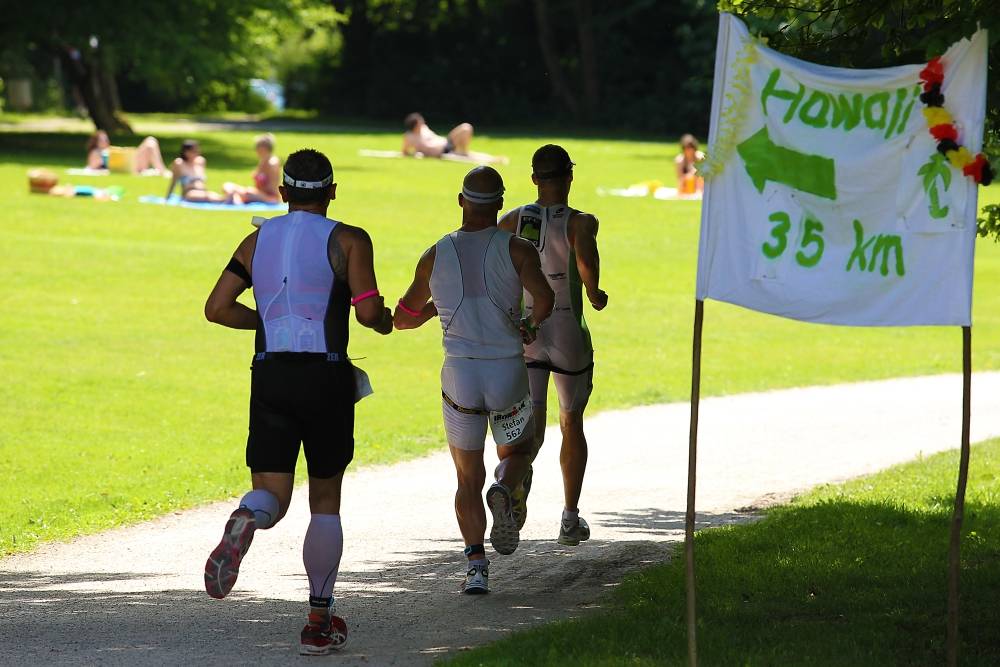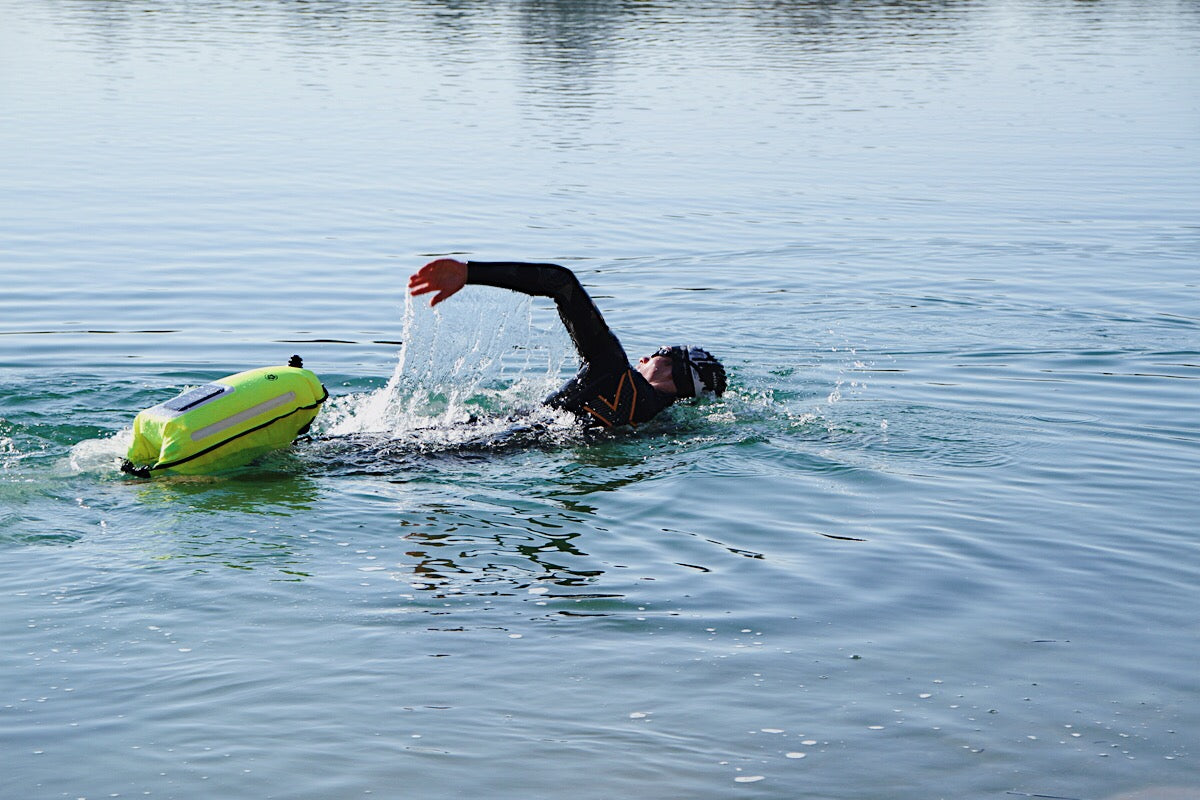Many athletes have the greatest respect for the last part of a long distance. legitimately. The supreme discipline in triathlon requires meticulous running training. After all, a marathon doesn't run itself. Today we will tell you how you can best prepare for the 42 kilometers.
Active athletes, and outsiders even more so, know the long-distance triathlon almost exclusively under the brand name “Ironman”. At the international association level, somewhat shorter races are also known as long-distance, in which 30 kilometers are to be run at the end. With the Ironman distance, regardless of whether it is a race with an official Ironman license, Challenge label, or independent events, the running part includes the classic marathon distance - i.e. 42.195 km have to be covered.
The marathon scissors are big
Today, high-class races with top international athletes can usually only be won with marathon times of around or under 2 hours and 45 minutes for men and a smooth 3 hours for women. In both cases, these are times that are difficult to achieve at amateur level, even for specialists.
Depending on age, gender, individual career and goals, the marathon times achieved by triathlon amateurs in the Ironman range from just under three hours to seven hours. Assuming four hours (+/- one hour depending on individual requirements) as the target time, the following training units would be recommended.
The long run
The long endurance run of up to 35 kilometers comes first, especially for athletes who do not yet have many years of experience in Ironman and marathon competitions. This unit is neither revolutionary nor surprising, but still has its justification for everyone who is not yet physically and mentally hardened by many years of long-distance training. All athletes benefit most from this unit when it is completed in an increased manner. Similar to the middle distance training, the training starts at a rather restrained pace and then gradually increases over the course of the unit. For a triathlete with a marathon target time of 3 hours and 30 minutes in the Ironman (corresponds to 5 minutes / kilometer), this means, for example:
Unit 1 - total duration 150-180 minutes
Kilometer 0: Start at a speed of 5:30/km
Kilometer 8: Increase speed to 5:15/km
Kilometer 16: Increase speed to 5:00/km
Kilometer 24: Increase speed to 4:45/km
Kilometer 32: Increase speed to 4:30/km
Kilometer 36: Latest end of the unit
If possible, this unit should be completed on the day after a long bike unit (120 to 180 kilometers). Despite the initially moderate pace, this running unit often feels downright terrible at first, only to become increasingly relaxed after ten to fourteen kilometers.
This also strengthens the self-confidence in being able to find a good rhythm in the competition even after initial problems. The following also applies to this unit: The training should be stopped immediately if the increased speed, no matter in which section, can no longer be maintained. Because such a drop in performance is often accompanied by reduced coordination and joint stability, which increases both wear and tear and the acute susceptibility to injury.
A circuit would therefore be preferable for this unit. Depending on the distance to the main competition, either the distance is in the foreground (i.e. the initial pace should always be chosen so slowly that the 36 kilometers can be run in full, even with an increase), or the pace (i.e. the choice is made in such a way that possibly has to start at kilometer 30, but the speed is correspondingly high). In any case, you have to “balance” yourself at the beginning.
The coupling unit
The following coupling unit is an alternative for athletes who, for private or professional reasons, cannot spend two full days cycling and running as described above:
Unit 2 - total duration (after cycling) approx. 90 min
After a bike ride of 90 to 120 kilometers, after a quick change that simulates and prepares for the competition, another fifteen to 20 kilometers are run. Since both disciplines are well below the lengths to be completed in the Ironman in terms of distance, the training here is a little faster than the desired competition pace.
For cycling, for example, this means an average of 35 km/h instead of the 33 km/h aimed for in the competition, and running 4:50 / km instead of the aimed 5:00 / km. In addition to pure training, this unit has two other essential functions: provided that the route in both disciplines roughly corresponds to the target competition, this unit can be used to check in a relatively compact manner whether the target time in the main competition is realistic at all. If moderately faster speeds cannot be achieved over significantly shorter distances, the objective should be adjusted. Secondly, the competition material (sitting position, etc.) and the competition nutrition can be checked particularly well with regard to the necessary quantities and tolerability. What works in this unit will hardly cause any problems in competition.
The "Double Run Day"
Despite promises to the contrary, the following still applies to an Ironman: a lot helps a lot, and more helps more, provided that the regeneration can keep up with the more training stimuli. The number of training kilometers run is therefore not irrelevant to the success of the competition. A particularly effective way to increase the training workload in the individual disciplines, which triathletes unfortunately neglect, is to complete a “double day”. In running, a long-distance “double run day” could look like this:
Unit 3 - total duration approx. 135 min
Morning: 45 to 60 minutes easy jog
Evening: 75 to 90 minutes competition-specific endurance run
The competition-specific endurance run can contain various elements. These can be repeated running through of crucial sections of the competition course (e.g. longer climbs, bridges, etc.) at the desired competition speed, an increased endurance run according to the scheme of Unit 1 (whereby the sections run above the desired competition speed are omitted), or repeated intervals of downhill runs only a slight incline to increase muscular resistance to the shock of impact over long distances.
preparation important
All of the units described above cannot simply be slotted in between breakfast and lunch. On the contrary, sufficient time, material and mental preparation is necessary. And while these workouts are highly specific and effective, they can't change one thing: every Ironman ends up being very, very painful, and no workout in the world can change that. But the more effectively you train, the faster you are at the buffet.
Find your favorite shoes
From the fast racer to the stable all-rounder





















3 comments
Tim
Eure angebliche wichtigste Einheit geht komplett am eigentlichen Sinn des langen Laufes vorbei, nämlich dem Training der Fettstoffverbrennung. Meiner Meinung vom Tempo eher für Athleten, die deutlich schnellere Pace laufen…Herzfrequenz bis Max ca. 75% würde mit Sicherheit weit überschritten von Athleten die 3:30 h hinten raus laufen!
Volker Sturm
Bitte noch dazu schreiben, zu welchen Zeitpunkten und mit welchen Intensitäten solche Trainings absolviert werden könnten, ansonsten ist der Artikel sinnlos und irreführend.
Mario
Ich habe bisher 22 Ironman Rennen mit Erfolg ins Ziel gebracht Inclusive 6 Ironman Weltmeisterschaft in Hawaii . Für meinen 7 Start in Hawaii habe ich mich 2021 auf Lanzarote qualifiziert.
Eure Empfehlungen gebe ich recht bis auf den langen Lauf.meiner Meinung nach reichen 2-2,5 Stunden oder 20-25 km .Sportliche Grüße Mario